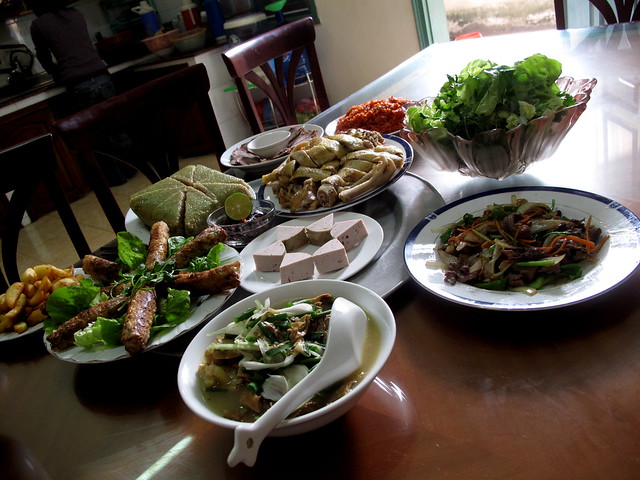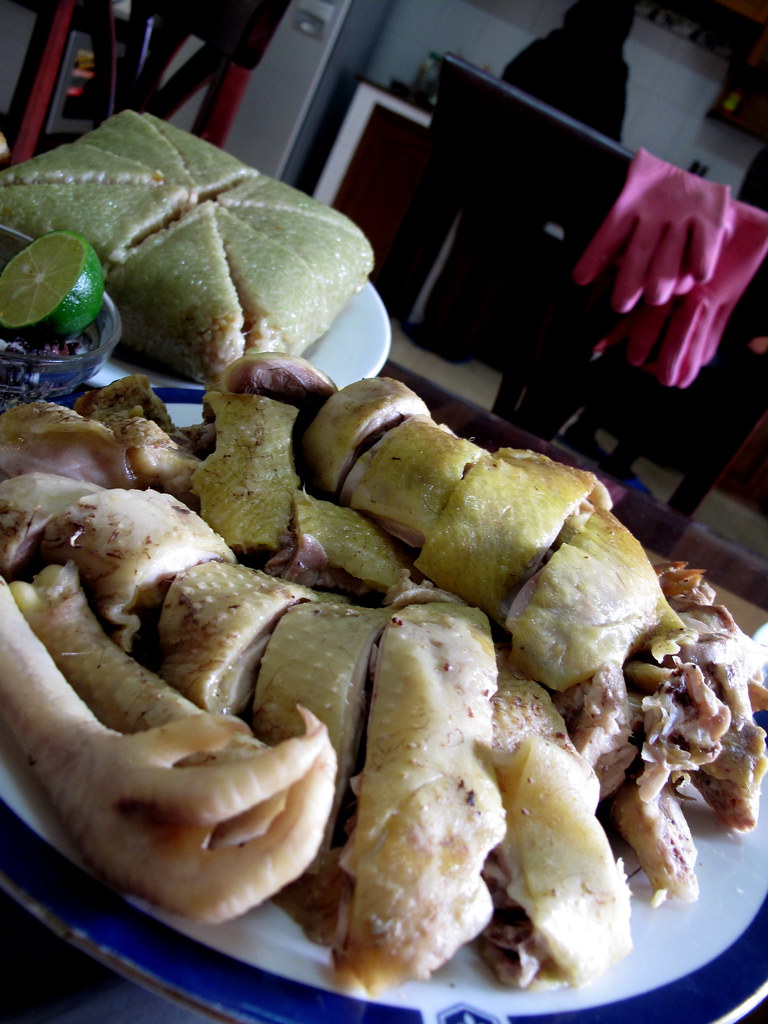The lunar calendar shows that Tet is coming, and from now until then, all things are Tet. The streets are Tet, the talk is Tet, the thoughts are Tet, the shopping is Tet, it's a Tet world in Vietnam right now and everybody knows it.
Tet is the most cherished time of the year in Vietnam. It is when the cities empty out and thousands go back to the countryside where they were born. City dwellers often choose to spend time at home. The streets empty out. The horns quiet, the traffic no longer congests and the hustle and bustle of city life, for a few days every year, comes to a halt.
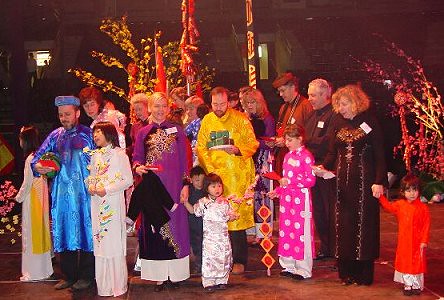
New year's Eve in Vietnam
As Vietnam develops and its expat population grows, the holiday has also come to hold a special meaning with foreigners as well.
"For me, Christmas was always the big holiday but now, Christmas is just a sign that Tet is approaching," shared Karen Merlin who has lived in Hanoi for over 4 years now. "It's hands down the best time of year, it is a time to catch your breath, relax and reflect on the last year."
Hitting the streets, Tet for foreigners residing in Vietnam means various things. For Stephen McGrath, living in Ho Chi Minh City, "Tet is a cultural event that perplexes and entertains me, but no-one ever knows when it is until a week beforehand," he said jokingly.
Paula, a long-time ESL teacher in Vietnam said for her, "Tet is the one true break I get all year. I cherish every moment and usually spend half in the city with my Vietnamese friends and half traveling somewhere outside of Hanoi."
As vendors try to stock up and sell as much as they can, many foreigners make plans to travel and get as far away as they can.
"I get as far out of the city as possible. It's the one time every year that I don't want to be in the city, I want to be out and traveling. It's so quiet it is lonely so I always grab a bag and hit the road. For me, Tet is my only chance for a big trip every year, so I take it," shared NGO worker Jason.
Adam, who is married to a Vietnamese woman said, "Tet is obviously a very important holiday. It's family time. We do all the traditional activities and it has been a remarkable cultural experience for me. Local food, local people, local everything. We go out to the countryside and celebrate with a huge and loving family."
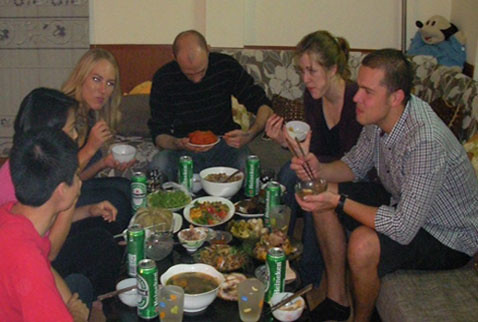
Foreign friends enjoying a traditional Tet meal with a Vietnamese family
One resident of Hanoi for over 15 years griped, "As much as I love Tet, it is also the time of year where for two months, the price of anything and everything goes up. From a business standpoint, Tet is terrible but once the day arrives, and my wife's family gathers, I realize that I love it. It's really my Christmas now."
For the plethora of teachers living and working in Vietnam, many refer to it simply as, "Tet is for travel."
Tet's meaning can also change drastically as it did for Eric Burdette, "My first four Tet's used to mean time off for continuous partying... However, over the past two years I have courted (and recently married) a Vietnamese woman. Now that I have a family in Vietnam, Tet has a completely different meaning. After over five years of living in Vietnam, being accepted into a family and having a real home during Tet makes me feel like I truly belong here."
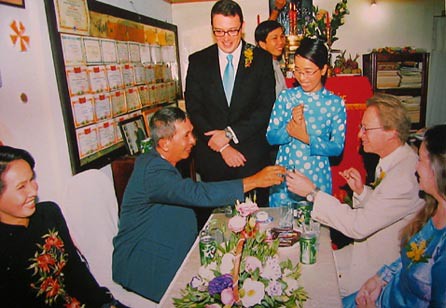
Eric’s Family in Vietnam during Tet holiday
Tet is a time for family and friends and has different meaning for different people. It is a holiday that like Christmas, both Vietnamese and foreigners have come to embrace and celebrate. It is East meets West. It is a time of joy for all. One embassy worker I spoke with simply said, "It's Tetmas." And this is Tet through the eyes of some foreigners
Tet is the most cherished time of the year in Vietnam. It is when the cities empty out and thousands go back to the countryside where they were born. City dwellers often choose to spend time at home. The streets empty out. The horns quiet, the traffic no longer congests and the hustle and bustle of city life, for a few days every year, comes to a halt.

New year's Eve in Vietnam
As Vietnam develops and its expat population grows, the holiday has also come to hold a special meaning with foreigners as well.
"For me, Christmas was always the big holiday but now, Christmas is just a sign that Tet is approaching," shared Karen Merlin who has lived in Hanoi for over 4 years now. "It's hands down the best time of year, it is a time to catch your breath, relax and reflect on the last year."
Hitting the streets, Tet for foreigners residing in Vietnam means various things. For Stephen McGrath, living in Ho Chi Minh City, "Tet is a cultural event that perplexes and entertains me, but no-one ever knows when it is until a week beforehand," he said jokingly.
Paula, a long-time ESL teacher in Vietnam said for her, "Tet is the one true break I get all year. I cherish every moment and usually spend half in the city with my Vietnamese friends and half traveling somewhere outside of Hanoi."
As vendors try to stock up and sell as much as they can, many foreigners make plans to travel and get as far away as they can.
"I get as far out of the city as possible. It's the one time every year that I don't want to be in the city, I want to be out and traveling. It's so quiet it is lonely so I always grab a bag and hit the road. For me, Tet is my only chance for a big trip every year, so I take it," shared NGO worker Jason.
Adam, who is married to a Vietnamese woman said, "Tet is obviously a very important holiday. It's family time. We do all the traditional activities and it has been a remarkable cultural experience for me. Local food, local people, local everything. We go out to the countryside and celebrate with a huge and loving family."

Foreign friends enjoying a traditional Tet meal with a Vietnamese family
One resident of Hanoi for over 15 years griped, "As much as I love Tet, it is also the time of year where for two months, the price of anything and everything goes up. From a business standpoint, Tet is terrible but once the day arrives, and my wife's family gathers, I realize that I love it. It's really my Christmas now."
For the plethora of teachers living and working in Vietnam, many refer to it simply as, "Tet is for travel."
Tet's meaning can also change drastically as it did for Eric Burdette, "My first four Tet's used to mean time off for continuous partying... However, over the past two years I have courted (and recently married) a Vietnamese woman. Now that I have a family in Vietnam, Tet has a completely different meaning. After over five years of living in Vietnam, being accepted into a family and having a real home during Tet makes me feel like I truly belong here."

Eric’s Family in Vietnam during Tet holiday
Tet is a time for family and friends and has different meaning for different people. It is a holiday that like Christmas, both Vietnamese and foreigners have come to embrace and celebrate. It is East meets West. It is a time of joy for all. One embassy worker I spoke with simply said, "It's Tetmas." And this is Tet through the eyes of some foreigners







